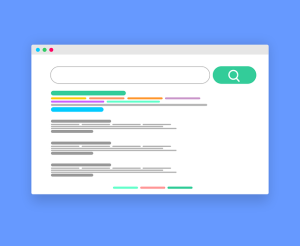SEO Content Optimization is vital for creating effective URL structures that enhance discoverability, improve search rankings, and boost user engagement. Key strategies include keeping URLs concise and descriptive, using hyphens for readability, incorporating relevant keywords naturally, and performing keyword research to align with user intent. User Experience (UX) optimization, regular review and simplification of URLs, mobile optimization, and leveraging tools for data-driven decisions are crucial. Mobile-First Indexing is essential in today's mobile-centric landscape. Tracking metrics like click-through rates and search engine rankings post-optimization is vital for refining strategies. Future trends include enhanced UX, advanced technologies, personalized results, multimedia content, and increased emphasis on engagement metrics.
“Unleash the power of SEO Content Optimization with our comprehensive guide. Explore the fundamentals, from understanding URL structure as a cornerstone of SEO to best practices for crafting compelling and keyword-rich addresses. Discover how user experience influences rankings and master tools for performance analysis. Learn from common mistakes, adapt to mobile-first indexing, and track success through key metrics. This course navigates the ever-evolving landscape of SEO optimization techniques, ensuring your digital content shines.”
Understanding SEO Content Optimization: The Foundation of URL Structure

Understanding SEO content optimization is paramount in crafting effective URL structures. Search Engine Optimization (SEO) goes beyond keyword stuffing; it’s about creating URLs that are both user-friendly and search engine compatible. A well-optimized URL acts as a roadmap, clearly indicating the topic and context of the page to both browsers and search algorithms. This foundation ensures your website is not only discovered but also ranks higher in search results.
The structure should be intuitive, using keywords strategically to describe the content within. This practice improves click-through rates, as users are more likely to engage with URLs that accurately represent what they’re seeking. By aligning URL structure with SEO content optimization, you establish a powerful connection between your website’s architecture and its ability to attract and retain organic traffic.
Best Practices for Crafting Optimal URLs

When crafting optimal URLs, adhering to best practices is essential for enhancing SEO Content Optimization. Start by keeping URLs short and descriptive, making them easy to read and understand. This clarity not only benefits users but also search engines in indexing your content accurately. Use relevant keywords that accurately represent the page’s content, ensuring they are naturally incorporated without keyword stuffing.
Avoid complex structures with multiple parameters and unusual characters. Opt for a straightforward format using hyphens to separate words, making URLs user-friendly and improving accessibility. Additionally, ensure your pages have static URLs, which provide consistency and make it easier for both users and search engines to find and share content.
Keyword Research and Its Role in URL Optimization

Keyword research is a fundamental aspect of SEO content optimization and plays a pivotal role in URL optimization strategies. By delving into relevant keywords, businesses can understand their target audience’s search intent and tailor their content accordingly. This process involves identifying popular search terms, analyzing competition, and uncovering long-tail keywords that accurately reflect user queries. With this knowledge, marketers can optimize URLs to match user expectations, enhancing both click-through rates and search engine rankings.
In the context of URL optimization, keyword research ensures that web addresses are not only descriptive but also aligned with the content they represent. Well-researched keywords in URLs can significantly improve a site’s visibility on search engines. It allows for the creation of clean, readable, and informative URLs, which not only assist users but also provide valuable signals to search algorithm, ultimately contributing to better SEO performance.
User Experience: How It Impacts Search Engine Rankings

User Experience (UX) plays a pivotal role in shaping how search engines perceive and rank websites. When a website offers a seamless, intuitive, and enjoyable UX, it acts as a strong signal to search algorithms that the site is valuable and user-friendly. This positively influences various ranking factors, such as bounce rate, time spent on page, click-through rates, and pages per session.
SEO Content Optimization goes beyond just keyword-rich text; it encompasses ensuring that a website’s structure, navigation, and visual elements work in harmony to deliver an exceptional user experience. By optimizing for UX, businesses can not only attract more organic traffic but also foster higher engagement, leading to better search engine rankings over time.
Tools for Analyzing and Improving URL Performance

When optimizing a website’s performance, understanding and leveraging the right tools is paramount. For URL optimization, specific software can analyze each link on a site, providing insights into their click-through rates, user behavior, and search engine rankings. These tools offer detailed reports that help identify problematic URLs, those that are poorly structured or not following SEO content optimization best practices.
With this data, marketers and web developers can make informed decisions to improve URL performance. This involves restructuring problematic links for better readability and relevance, adding keywords for enhanced search engine visibility, and ensuring mobile-friendliness. By utilizing these tools effectively, websites can significantly boost their online presence, leading to increased traffic and improved user engagement.
Common Mistakes to Avoid During the Optimization Process

Many businesses make the mistake of approaching URL optimization as a one-time fix, thinking that once their URLs are optimized, they’re good to go. However, SEO content optimization is an ongoing process that requires regular review and refinement. Dynamic URLs, for instance, can quickly become cluttered with parameters, making them less user-friendly and search engine unfriendly. It’s crucial to simplify these URLs by removing any unnecessary characters or parameters, ensuring they remain clean and concise.
Another common pitfall is neglecting mobile optimization. With the majority of internet traffic now coming from mobile devices, optimizing for a seamless mobile experience is essential. This includes ensuring your URLs are responsive and adapt well to different screen sizes, as well as considering how users interact with them on their phones or tablets. Using mobile-friendly URL structures not only enhances user satisfaction but also boosts your search engine rankings.
Mobile-First Indexing and Its Implications for URLs

In today’s mobile-driven world, Mobile-First Indexing (MFI) has become a game-changer in search engine optimization (SEO) content optimization strategies. Search engines, notably Google, prioritize indexing and ranking web pages based on their mobile versions first, reflecting how users primarily access the internet through smartphones and tablets. This shift has significant implications for URL optimization. Website developers and content creators must ensure their URLs are optimized for both readability and search engine friendliness across all devices.
By adopting a mobile-first approach, SEO content optimization becomes more dynamic. URLs should be structured in a way that makes them easily understandable by search engines and users alike. This involves using descriptive keywords, keeping paths concise yet informative, and implementing responsive design practices to adapt content for various screen sizes. Such strategies not only enhance user experience but also ensure that mobile users benefit from relevant, high-quality content, thereby boosting overall website performance in search results.
Measuring Success: Tracking Key Metrics After Optimization

After optimizing your URL structure, tracking key metrics becomes crucial to measure the success of your efforts. This involves analyzing essential factors like click-through rates (CTR), which indicate user interest and search engine rankings for targeted keywords. Tools such as Google Analytics and Search Console provide valuable insights into these areas, allowing you to understand how effectively your optimized URLs are performing.
Monitoring these metrics helps identify trends and potential issues early on. For instance, a sudden drop in CTR could signal problems with the content or a need to reassess keyword targeting. By continuously tracking and analyzing these key performance indicators (KPIs), you can refine your SEO content optimization strategies, ensuring ongoing improvements and better search engine visibility.
Future Trends in SEO Content Optimization Techniques

As technology advances, so do search engine optimization (SEO) techniques and algorithms. Future trends in SEO content optimization will likely focus on enhancing user experience with an emphasis on voice search and personalized results. With the rise of artificial intelligence, search engines will become even more sophisticated at understanding natural language queries, allowing for more precise and relevant content delivery.
Content creators will need to adapt by incorporating long-tail keywords and semantic search terms into their writing. Additionally, creating content that is interactive, multimedia-rich, and optimized for mobile devices will be crucial. User engagement metrics such as click-through rates, time spent on page, and bounce rate may also play a more significant role in determining the ranking potential of web pages, driving SEO content optimization strategies further.
